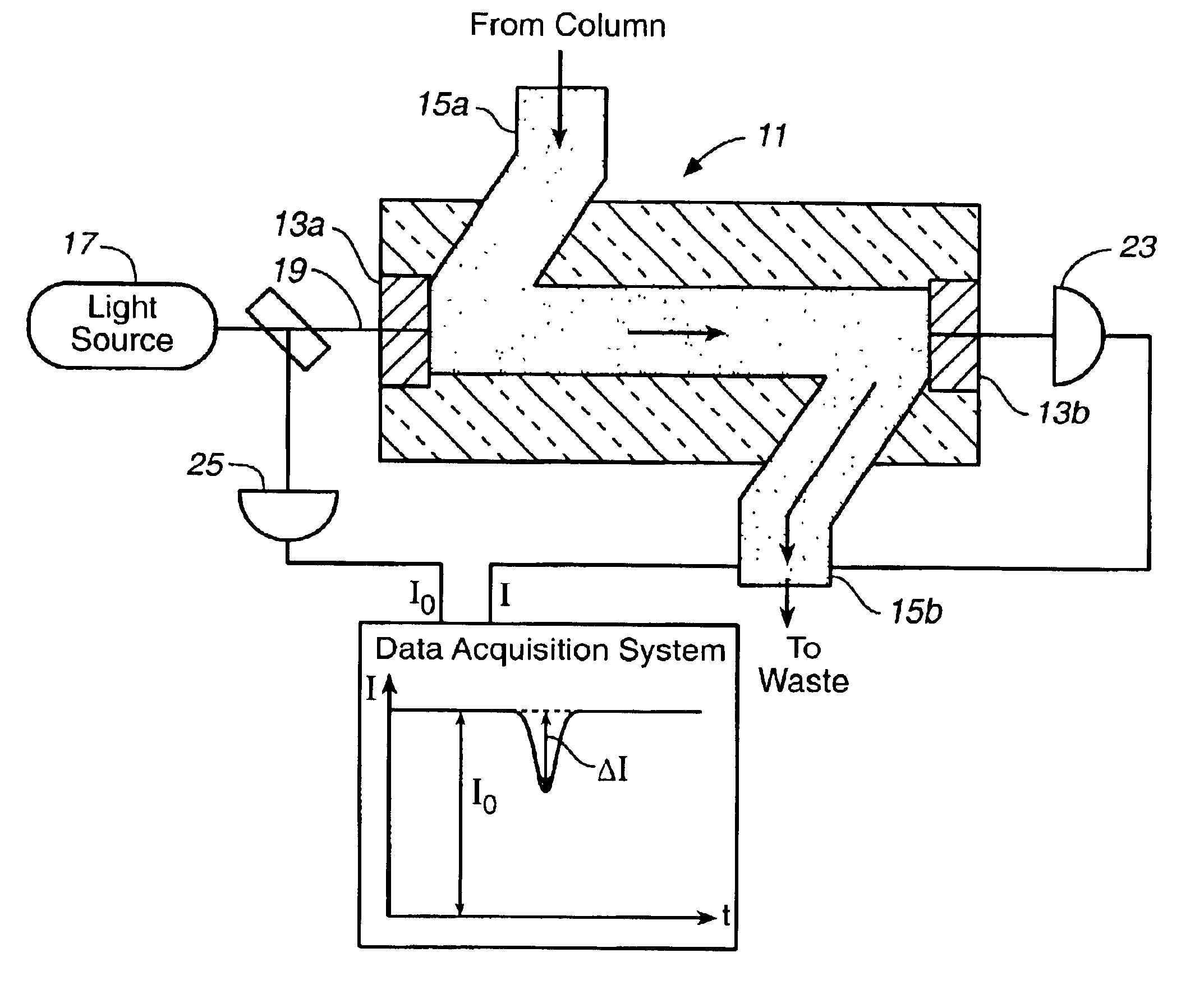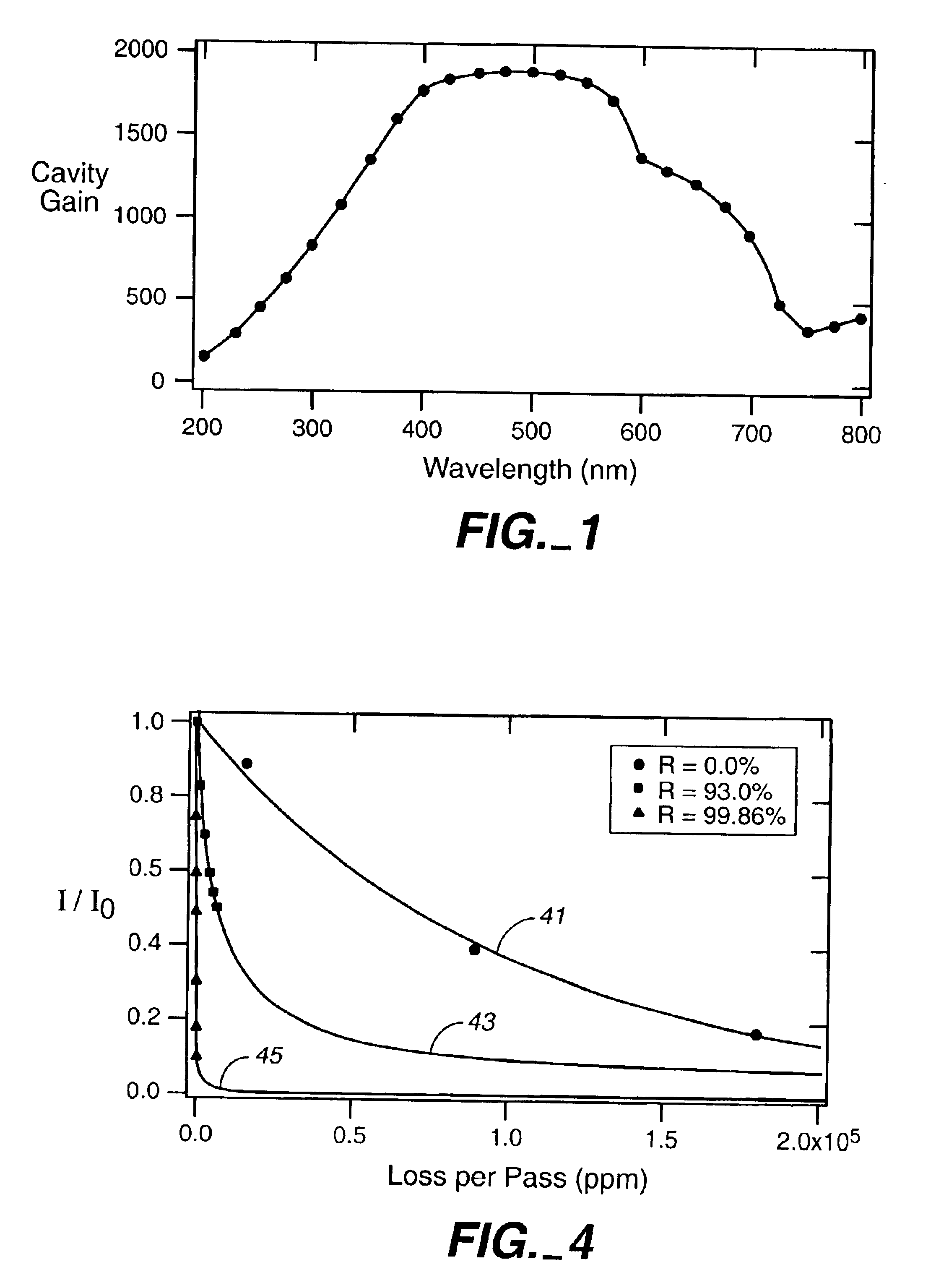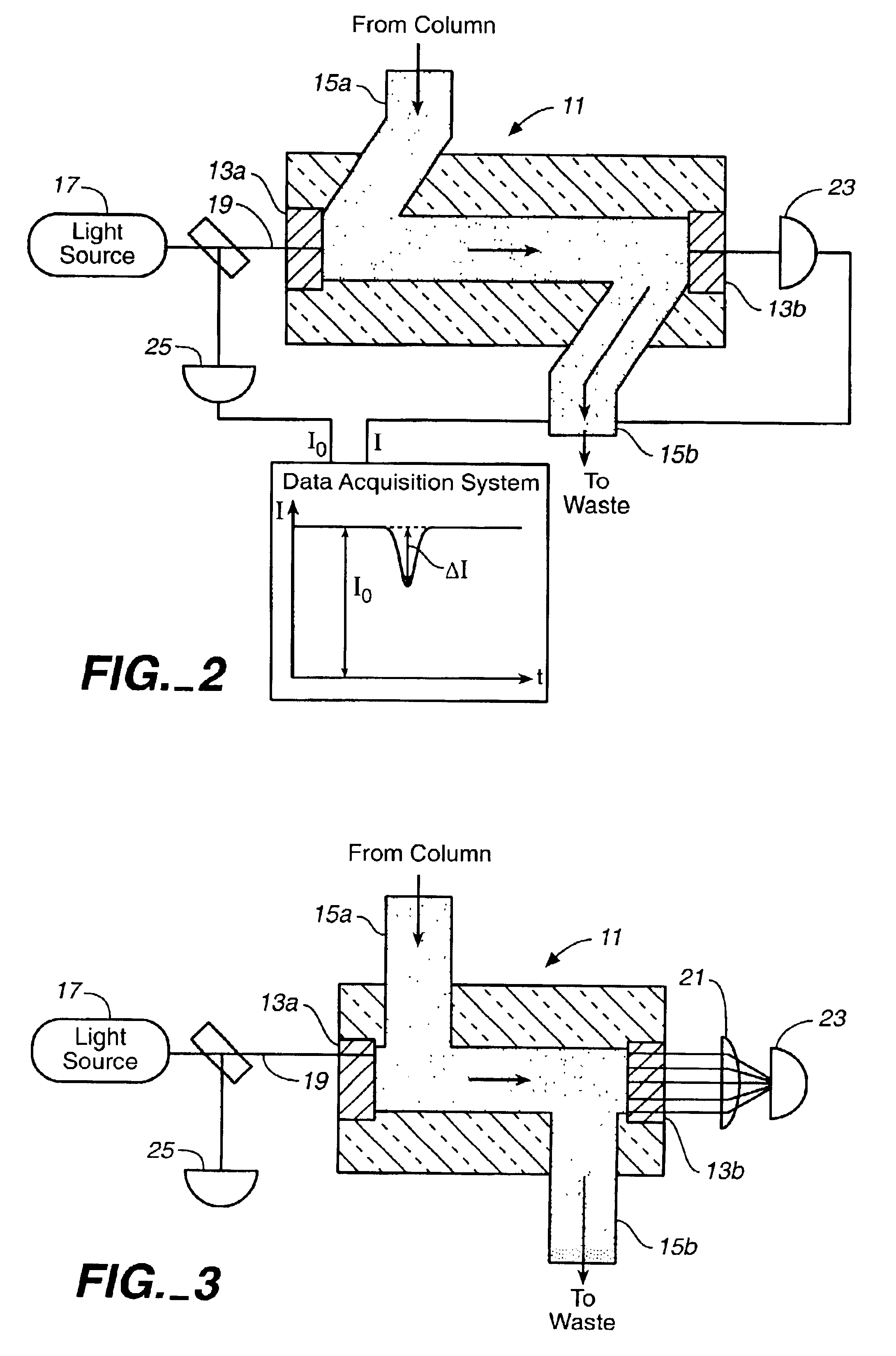Cavity-enhanced liquid absorption spectroscopy
- Summary
- Abstract
- Description
- Claims
- Application Information
AI Technical Summary
Benefits of technology
Problems solved by technology
Method used
Image
Examples
Embodiment Construction
The basic concept of cavity-enhanced absorption has been well studied and documented. A high-finesse optical cavity is arranged in a stable configuration such that the radii of curvature of the mirrors, R1 and R2, and the distance between the mirrors, d, satisfy the inequality 0<(1-dR1) (1-dR1)<1
Light from either a coherent or incoherent source is injected through the first mirror and detected beyond the second mirror. The absorbing sample (in the present invention, a liquid) is contained between the mirrors and transmission through the optical cavity is measured. If a coherent light source is implemented, either off-axis injection or a dithering of the laser and cavity frequencies can be used to avoid interferences inside the cavity. In the absence of such interferences, the intensity transmitted through the second cavity mirror, Iτ, is given by IT=ILCPT22(1-R+L+A)
where IL is the laser intensity, Cp is a cavity coupling parameter, T is the average mirror transmission, L ...
PUM
 Login to View More
Login to View More Abstract
Description
Claims
Application Information
 Login to View More
Login to View More - R&D
- Intellectual Property
- Life Sciences
- Materials
- Tech Scout
- Unparalleled Data Quality
- Higher Quality Content
- 60% Fewer Hallucinations
Browse by: Latest US Patents, China's latest patents, Technical Efficacy Thesaurus, Application Domain, Technology Topic, Popular Technical Reports.
© 2025 PatSnap. All rights reserved.Legal|Privacy policy|Modern Slavery Act Transparency Statement|Sitemap|About US| Contact US: help@patsnap.com



